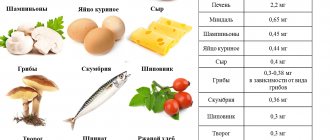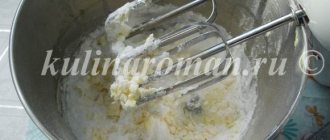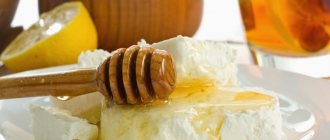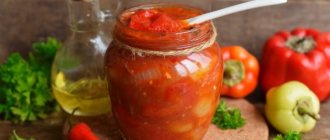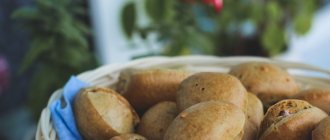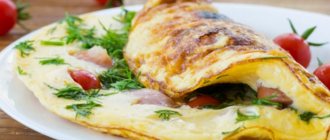Beneficial features
Maple syrup is rich in a huge amount of healthy sugars, vitamins, enzymes and minerals. And in addition to all this, you can highlight a large and unique list of useful properties:
- an allergy to a product is much less common than an allergy to honey;
- most of the elements that provide sweetness to the syrup do not belong to the group of carbohydrates, but to phenolic compounds;
- Considering the property noted in the paragraph above, sweetness is a real “salvation” for diabetics. An array of scientific studies have shown that with the help of abscisic acid contained in the syrup, it is possible to control the production of insulin in the body. The enzyme also has a beneficial effect on the functioning of the pancreas;
- has an anti-inflammatory effect on the body as a whole;
- stimulates the functioning of the circulatory system;
- some elements effectively fight the formation of cancer cells;
- supports the human immune system in “combat” mode;
- has a positive effect on men's health due to its high zinc content;
- a quarter cup of syrup will provide half the daily requirement of calcium and potassium;
- stimulates and strengthens the functioning of the heart muscles;
- reduces the level of bad cholesterol;
- general preventive effect against diabetes, atherosclerosis, cardiovascular and cancer diseases.
Maple syrup is a real substitute for “harmful” sweets, with which you can feed the body with the necessary glucose and avoid the addition of excess carbohydrates. It can be used as an alternative to sugar in sweet baked goods or when added to drinks.
However, it is impossible to say that maple syrup is a real dietary product.
It perfectly stimulates the appetite and contains a significant amount of calories, but when you really want something sweet, it will be an excellent alternative to honey. On a diet, you can add a small amount of syrup to cottage cheese or meat dishes. It goes well with turkey, for example.
Medicinal properties
Agave contains fructans and saponins. The latter are also found in the roots of other plants, such as ginseng. It is saponins that have anti-inflammatory effects, strengthen the immune system, and have an antimicrobial effect. The Aztecs also used agave tincture to treat various wounds.
One of the varieties of fructans is the substance inulin, which has a number of properties:
- Research has proven that inulin can be beneficial for people who are overweight. The substance affects blood sugar levels and increases the feeling of satiety, thereby reducing appetite.
- Inulin can lower cholesterol levels in the body and also reduces the risk of certain types of cancer.
- The beneficial properties of the plant allow it to be used to prevent pregnancy. In China, substances such as dinordrin and anordrin are isolated from agave, which are included in the group of contraceptives; they can be taken only a couple of times a month, unlike other pills.
- Research has proven that inulin improves calcium absorption by twenty percent, which leads to an increase in tissue density by fifteen percent. Such properties of the plant are important for older people whose bones are prone to brittleness.
- Agave contains steroidal saponins, which are good as an antirheumatic agent.
Agave can be used as a remedy and at home. People suffering from neuritis and rheumatism can apply the cut leaf to the sore spot, wrapping it with a bandage. This compress should be kept for at least two hours. If an agave leaf causes a burning sensation, then the natural juice of the plant can be diluted with water in equal proportions, and then used for compresses and lotions.
Harm to the product
Real maple syrup does not contain any harmful substances, but you should not overuse it either, as this can lead to an excess of substances such as iron, manganese, calcium and potassium.
Artificial maple syrup does not provide any benefit, but the amount of carbohydrates and sugar in it tends to be an indicator of the real “harmful” sweetness.
The product has no contraindications, however, upon first use, it should be noted whether any allergic reactions have occurred. If not, then 20-30 g of this sweet substance can be safely included in your daily diet!
How is the product prepared?
Agave syrup has been around for a long time. It is prepared using approximately the same technology as maple syrup. The juice is placed in containers and evaporated until it thickens to a certain consistency. The liquid should be viscous. This is agave syrup. Depending on the duration of processing, the mass may have a light yellow or dark color.
However, producing syrup on an industrial scale is a little different. Considering the number of processing stages that raw materials undergo, it is difficult to say whether anything useful remains in the final product. We can definitely say that we are purchasing a product with a high fructose content.
But how beneficial or harmful it is depends entirely on how it was processed. Agave syrup contains 70-90% fructose, which is the same as corn syrup, which has long been banned from use. A number of countries have banned its use in food production due to its ability to lead to obesity. Let's figure out what are the benefits and harms of agave syrup.
How to choose real syrup?
- Taste: the syrup does not have a specific color; it can be either light honey or dark amber. The darker the syrup, the richer and more tart its taste.
- This product is manufactured in Canada. US production is unlikely to reach Russia. A distinctive feature of real syrup is a small maple leaf on the label.
- A volume of 200-250 ml cannot cost less than 400 rubles (with the exception of special promotions and discounts in markets).
- The product is not allowed to contain sediment. It can have different shades of amber, but transparency is a prerequisite.
You can store the unopened syrup in a dark place. It is better to keep the opened bottle in the refrigerator.
Calorie content (based on data for a female mental worker 25-35 years old)
100 g of maple syrup contains approximately 260 calories.
1 teaspoon (7 g)
| 1 tablespoon (20 g) | Cup | |
| 200 ml (320 g) | ||
| 18.2 Kcal | 52 Kcal | 832 Kcal |
| 1% of daily value | 3% of daily value | 52% of daily value |
Nutritional value per 100 g of product
Squirrels
| Carbohydrates | Fats | ||
| Does not contain | 67 g or 33% of daily value | Saturated: | Less than 0.1 g |
| Monounsaturated: | |||
| Polyunsaturated: | |||
Vitamin content per 100 g of product
Name
| Content | % of daily value | |
| Vitamin B1 (thiamine) | 0.066 mg | 4% |
| Vitamin B2 (riboflavin) | 1.27 mg | 71% |
| Vitamin B5 (pantothenic acid) | 0.036 mg | Less than 1% |
| Vitamin B6 (pyridoxine) | 0.002 mg | Less than 1% |
| Vitamin PP (Niacin equivalent) | 0.081 mg | Less than 1% |
| Choline (Ch, Vitamin B4) | 1.6 mg | Less than 1% |
Mineral content per 100 g of product
Name
| Content | % of daily value | |
| Calcium (Ca) | 102 mg | 10% |
| Magnesium (Mg) | 21 mg | 5% |
| Sodium (Na) | 12 mg | 1% |
| Potassium (K) | 212 mg | 9% |
| Phosphorus (P) | 2 mg | Less than 1% |
| Iron (Fe) | 0.1 mg | 1% |
| Zinc (Zn) | 1.47 mg | 12% |
| Copper (Cu) | 18 mcg | 2% |
| Manganese (Mn) | 2.908 mg | 145% |
| Selenium (Se) | 0.6 mcg | 1% |
Maple syrup is a rare item on the shelves of Russian stores. However, its beneficial properties are clearly underestimated. When used to improve health, it should be remembered that the effectiveness of any natural product depends on a regular and correct approach to its use. Drinking a glass of maple syrup in one gulp is unlikely to “ennoble” the body with its valuable properties, but it can cause serious harm.
Syrups are the leaders in calories
However, various syrups are the most high-calorie. They contain active ingredients to reduce fever, relieve pain, and against cough. In most cases, they are produced to treat children who are difficult to get to take a bitter pill, and sweet syrup with strawberry, orange or cherry flavors suits their taste.
Medical syrups are prepared on the basis of refined sugar: take 9 parts of this substance and add 5 parts of water. Sometimes syrups are made from concentrated natural juice, which contains a lot of glucose. On average, the caloric content of such dosage forms is approximately 300 kcal per 100 g. Of course, no one will drink such a large volume at a time, but in 3-4 days of taking syrup to reduce a fever or to treat a cough, it’s easy.
Most often, for an adult, a single dose of medicinal syrup is 1 tablespoon, which contains 15 g of the substance, so it turns out that the energy value of a single dose of this medicine is as much as 45 Kcal. In most cases, syrups are drunk 3 times a day. As a result, it turns out that during the day the patient eats 135 Kcal in this way, and this is not so little.
Therefore, if a person is very concerned about his figure or has diseases in which sugar needs to be limited (diabetes mellitus type 1 or 2), then instead of syrups it is also worth using similar drugs in the form of regular tablets - all drugs have such drugs.
Maple syrup
An amazing product given to the world by ancient Indian tribes that once lived on the territory of modern Canada. They extracted maple syrup from trees by making a small cut in the bark. Over time, European settlers adopted this practice. Today, maple syrup is produced primarily in Canada.
Maple syrup is produced from the sap of the maple tree (sugar, black, red), which is collected in early spring (from February to April). The juice is then heated for a long time to evaporate the water. It takes a significant number of hours to get the syrup to the desired thickness. It should be noted that water makes up up to 96% of the sap, so it takes about 40 liters of sap to make 1 liter of maple syrup.
No preservatives, fillers or sugar are used to make this sweet liquid. The main component of maple syrup is sucrose.
Depending on the degree of density and transparency, it is conventionally divided into Canadian and American (Vermont) syrup.
The hallmark of real maple syrup is its mild, woody flavor. Its consistency is close to fresh natural honey - transparent (translucent), thick and viscous (calorizator). It has a distinctive aroma, which is most noticeable in the dark amber syrup (made from the sap collected at the end of the season).
Maple syrup calories
The calorie content of maple syrup is 260 kcal per 100 grams of product.
What is the difference between dark agave syrup and light agave syrup?
The color of agave nectar indicates its quality, preparation method and degree of filtration. There is light, dark and amber syrup. Light and dark varieties are produced from the same raw materials. But in the second case, the product is filtered less: then it is rich in inulin. The properties of a light or dark yellow tint depend on the duration and intensity of heating during thickening. The taste of light syrups is less intense.
We recommend reading: What are the benefits of sea urchin caviar: composition, calorie content, application, reviews
Maple syrup will help you stay slim
All representatives of the fair sex, without exception, want to achieve the desired slimness, and even the slenderest ladies still sometimes consider their figure to be insufficiently perfect.
However, the constant need to limit ourselves in sweets causes a certain discomfort in many of us, because sometimes we really want to enjoy something sweet and tasty! Well, maple syrup can help you - with the right approach, it will help you avoid gaining excess weight and can become a real delicacy! Maple syrup - what is it? Under the name “maple syrup,” modern consumers are offered sweet, thick sap obtained from deciduous trees processed by a special method. The height of the trees from which the juice is collected in most cases exceeds thirty meters, and their diameter often reaches one and a half meters. In this case, sugar, black and red maples are most often used, found mainly in North American territories, in particular in Canada - where maple syrup has long been the most traditional product! Maple syrup is a fairly viscous and viscous liquid, which is obtained by evaporating excess moisture from the juice at relatively low temperatures. And this process is very painstaking and lengthy, in addition, it has a lot of nuances and features unique to it. Currently, the main production of this valuable product is concentrated mainly in the northern United States and Canada - this is where the largest and incredibly dense maple forests grow. The collection of sap usually begins in early spring, just like the collection of birch sap in our latitudes. Holes are drilled in each maple tree through which thick sap gradually flows into pre-prepared containers. In order to obtain a single liter of ready-to-drink maple syrup, at least about forty liters of raw sap must be properly processed! And all this because the juice is placed in special vats, in which excess liquid is evaporated from it, making sure that it gradually thickens. An important feature of this labor-intensive process is that in no case are any foreign impurities added to the syrup, either of chemical or natural origin. This is precisely what determines the enormous benefits of original high-quality maple syrup, because it preserves all the beneficial ingredients given by nature! And it is precisely this same fact that determines the rather high cost of a valuable product!
Composition and calorie content The chemical composition of maple syrup is truly unique, and the chemical composition of one syrup may differ markedly from the chemical composition of exactly the same syrup that was produced at another time or for which the raw materials were collected in a different area. And the color of maple syrup can also vary from rich amber brown to almost transparent yellowish! In general, the gradation of shades of such a syrup completely depends on its saturation and composition. Made in early spring, maple syrup can be very, very light and then gets darker and darker over time. And it never contains absolutely any dyes or sweeteners! The calorie content of maple syrup can also vary markedly, but on average it is 202-265 kilocalories for every hundred grams of product. This product is also characterized by the complete absence of any fat, and it contains about fifty-three grams of carbohydrates. Maple syrup contains such valuable substances as magnesium, sodium, manganese, zinc and calcium with potassium, as well as record amounts of vitamins. And, best of all, this syrup practically does not cause allergic reactions (only 2 - 3 percent of cases)!
Benefits for health in general and for the figure in particular The good thing about maple syrup is that it can be consumed by diabetics without any serious concerns - it will be an excellent alternative to cakes, pastries, sweets and other sweets that are prohibited for diabetics. That is, in this case, this product will not allow the insidious disease to worsen a person’s quality of life! A fairly high calcium content makes maple syrup an excellent assistant for strengthening and significantly improving the condition of skin, hair, nails and even bones. And the potassium present in its composition will strengthen the heart muscle and support the entire cardiovascular system as a whole. Maple syrup is an excellent immunomodulator, endowed with the ability to significantly increase the human body’s resistance to a wide variety of viruses and bacteria penetrating from the outside. People who regularly use it are much less likely to suffer from ARVI, influenza, bronchitis, tonsillitis and other colds. Also, maple syrup is considered a fairly powerful aphrodisiac, which is why it can often be found in all sorts of folk remedies to stimulate potency and increase libido. And all this is thanks to the impressive amounts of zinc it contains, which has an extremely beneficial effect on the genitourinary area. Maple syrup is a wonderful stimulant of brain activity and central nervous system activity. It will be especially useful for those who are subject to too frequent depression and stress, and also have a tendency to various kinds of nervous disorders. And with regular use of this syrup, blood vessels also become much stronger - in this case, excess cholesterol does not accumulate in them, and toxins are removed from them much faster and more efficiently. So maple syrup is an excellent natural medicine against angina, atherosclerosis, hypertension and other similar ailments! Maple syrup also perfectly calms the nerves, normalizes the activity of the gastrointestinal tract, which is important when losing weight, stimulates the activity of the thyroid gland and even helps protect against insomnia! It gives a charge of vivacity and energy for almost the whole day, and for this, workers of both physical and mental labor love it! However, it is allowed to consume no more than 25–32 grams of this valuable product per day!
Maple syrup - composition
The maple syrup production process is carried out in such a way as not to affect its composition. Most often, the final product contains from 1.5 to 3% sugars. Its advantage is also that it remains free of preservatives, as it is preserved at high temperatures (approximately 82°C), which protects against the harmful effects of microorganisms. Once opened, the bottle is suitable for consumption for approximately 18 months .
Interestingly, to produce 1 liter of maple syrup you need up to 20 to 50 liters of fresh maple sap.
100 g of syrup contains 270 calories , that is, much less than white sugar, so it can be a healthy substitute. However, since it contains mainly sucrose, maple syrup should be consumed in moderation. It should not be used by persons on a low-carbohydrate diet. Also not a good option for those struggling with extra pounds. This makes it a very good substitute for honey if you are allergic to its components.
Currently, maple syrup can be purchased at most grocery stores and large supermarkets. It is best to choose a product in a glass bottle, because this type of packaging allows you to preserve the freshness of the product much longer. Its cost is comparable to the price of good honey.
How to choose a good quality topping
Rules for choosing maple topping if you decide to buy:
- The topping is produced and packaged in Canada. The highest quality varieties are produced here, produced using the correct technology without the addition of flavors, preservatives and sugar.
If the manufacturing country of Canada is indicated on the label, but the product is packaged in some other country, then this is a high-quality fake.
Price is important. The cost of 1 liter of topping should not be less than $70.
The freshness of the product is determined by taste. Really fresh syrup does not have any distinct taste; it usually has light caramel notes with a woody aftertaste. The consistency of the additive is viscous, medium thick.
Pay attention to the color. The liquid has an amber color; the lighter the amber shade, the more pronounced the taste of the topping will be.
The product is classified according to a special system:
- the most popular syrup is Canada No. 1 (used for dietary or medicinal purposes);
the darker variety Canada No. 2 is most often used as a culinary component (topping color is dark);
The thickest, with a pronounced sweet taste, is Canada No. 3. Troika is used as a sweetener, replacing sugar, honey or any other sweets.
How to select and store maple syrup?
In order not to make a mistake in choosing a product and to enjoy the taste of healthy maple syrup, you need to pay attention to the following criteria:
- Price. Original products cost at least 40 dollars per 1 liter.
- Manufacturer. A quality certificate is required.
- Compound. There should be no indication of the addition of artificial sugars, other syrups (most often the product is supplemented with corn syrup) and preservatives.
- Type of packaging. The thick consistency and pleasant amber color of high-quality natural syrup are visible only in transparent glass bottles.
The recommended shelf life of the product is no more than 12 months. If the container is opened, it should only be kept in a cool place out of direct sunlight. If the smell or color changes, it is better not to use the syrup for food. If it has become candied, heat treatment will help restore the texture, but the product will lose its benefits.
Maple syrup is a healthy product of natural origin that can energize the body, improve immunity, and slow down the natural aging processes of the skin. With moderate consumption, you do not have to worry about gaining excess weight, allergies and other negative phenomena.
Composition, calorie content, glycemic index
There are 262 kcal per 100 ml of topping. The nutritional value of the product is expressed in the following indicators:
- protein - 0 g;
carbohydrates - 67.5 g;
dietary fiber - 0 g;
Vitamin content:
- thiamine (B1) - 0.07 mg;
riboflavin (B2) - 1.3 mg;
choline (B4) - 1.5 mg;
pantothenic acid (B5) - 0.4 mg;
pyridoxine (B6) - 0.001 mg;
vitamin NE - 0.082 mg.
Mineral content:
- sodium - 11 mg;
calcium - 103 mg;
The glycemic index of the product is 54 units.
Some more interesting facts about maple syrup in this video:
Contraindications and possible dangers
Compared to other sweet syrups, maple topping is quite safe.
But it has contraindications:
- Pregnant and lactating women should exclude this product from their diet.
High glucose levels can change the composition and properties of mother's milk, and uterine stimulants can increase the risk of miscarriage.
If you are individually intolerant to maple syrup, the inclusion of topping in the menu is prohibited.
If you have diabetes, consultation with your doctor is required.
The syrup contains a high concentration of glucose, which, if consumed in excess, can lead to unwanted fluctuations in blood sugar levels.
What is maple syrup made from, what are its benefits and harms - about this in the following video:
What are the benefits of agave syrup?
If you look at the pages of online health and diet food stores that sell agave syrup, you can find a lot of information about its beneficial properties. Review sites are filled with opinions from satisfied customers. The basis for such statements is the low GI mentioned above. Consumption will not cause a sudden spike in sugar, which, given its low calorie content and high fructose concentration, speaks in favor of using agave syrup for those who suffer from diabetes or simply follow a healthy lifestyle.
We recommend reading: Turmeric: health benefits and harm, medicinal properties, applications
The Aztecs knew the beneficial antiseptic properties of the plant, lubricating wounds with its tincture.
Real, properly prepared agave syrup has beneficial properties:
- contains a complex of vitamins;
- due to the fructose content, it is able to normalize metabolism;
- removes waste and toxins;
- contains saponins, which help fight germs, inflammation, and help strengthen the immune system.
The fructan substances in the product, represented by inulin (in unfiltered dark varieties) and other varieties, have the following properties:
- create a feeling of satiety;
- reduce appetite;
- provide antioxidant effect;
- lower bad cholesterol;
- improve calcium absorption by 20%.
Thanks to fructans, agave syrup is not only successfully used to combat excess weight and in the menu of diabetics, but is also recommended in moderate quantities in old age to increase bone density.
The plant is also used to prevent pregnancy, because the dinordrin and anordrin it contains are herbal contraceptives.
Steroidal saponins in the plant help against rheumatism.
Thus, the numerous beneficial properties make agave a home remedy.
How to use the supplement, features of use
Consuming maple syrup should be the same as consuming sugar. The daily norm is 50 g of sugar per 70 kg of weight. This is approximately 5-6 teaspoons of product. When planning to switch entirely to maple syrup, keep these values in mind.
In cooking
It is best to use the topping together with other products as an additive. For example, add it to milk, coffee (or tea), pour it over pancakes and pancakes, mix it with cottage cheese or porridge.
Pumpkin Almond Cookies
This is a simple original recipe for an original dessert.
Ingredients:
- nuts (almonds) - 150 g;
wheat flour - 100 g;
lemon zest - 1/4 cup;
maple topping - 35 ml;
vanillin - 0.5 teaspoon;
pumpkin puree - 100 g;
coconut flakes - 1/4 cup.
Mix flour, ground almonds, finely grated zest, vanillin and coconut flakes.
Separately, beat the white of one egg until foamy. Gradually pour in the maple syrup. Mix the mixture with other ingredients, add pumpkin puree to them.
Place the mixture on a baking sheet (at the rate of 1 teaspoon of dough for 1 cookie). Bake cookies for 20-35 minutes at 150 degrees. Don't forget to cover the baking sheet with parchment before baking.
